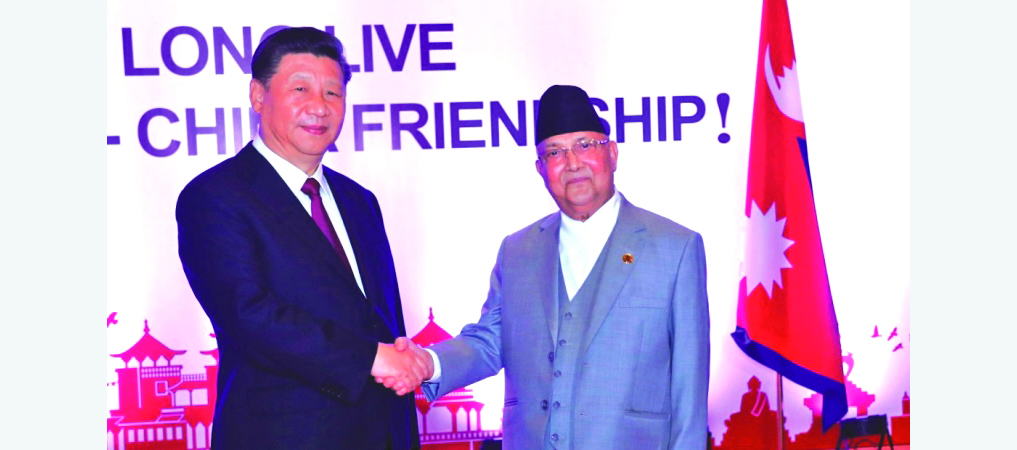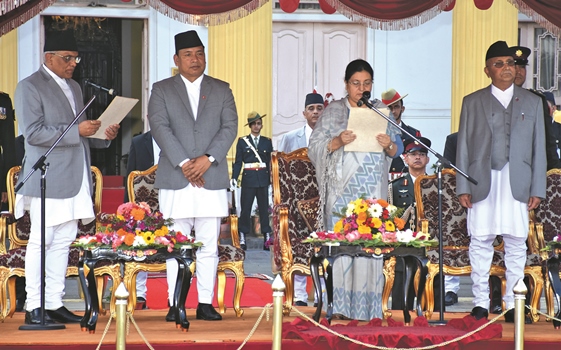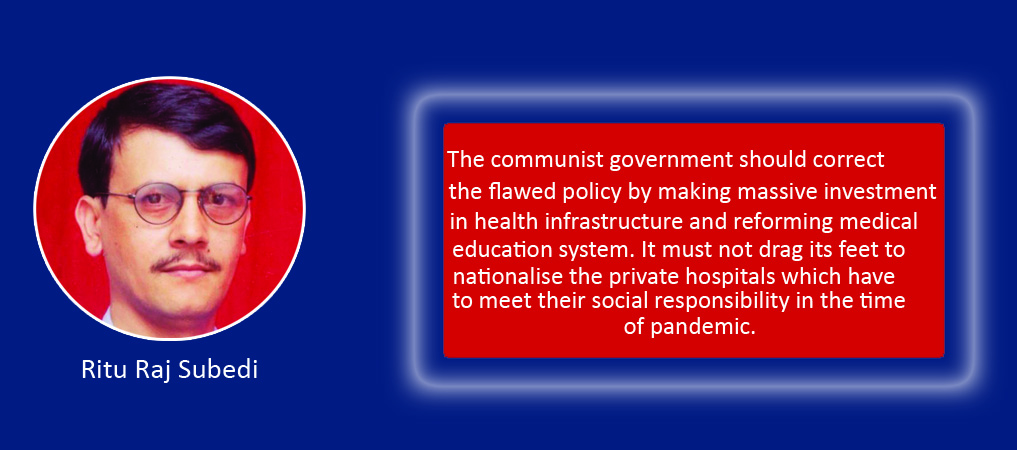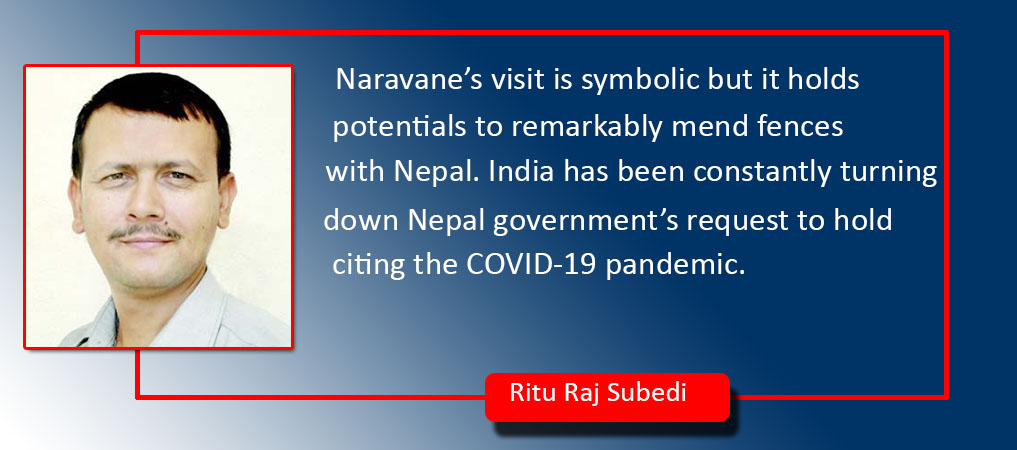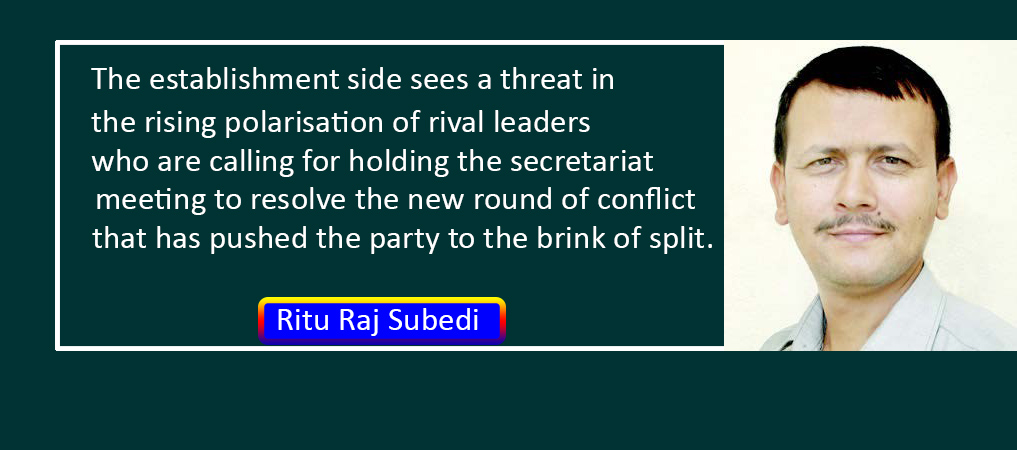Post-monsoon Havoc Wake-up Call For Climate Action
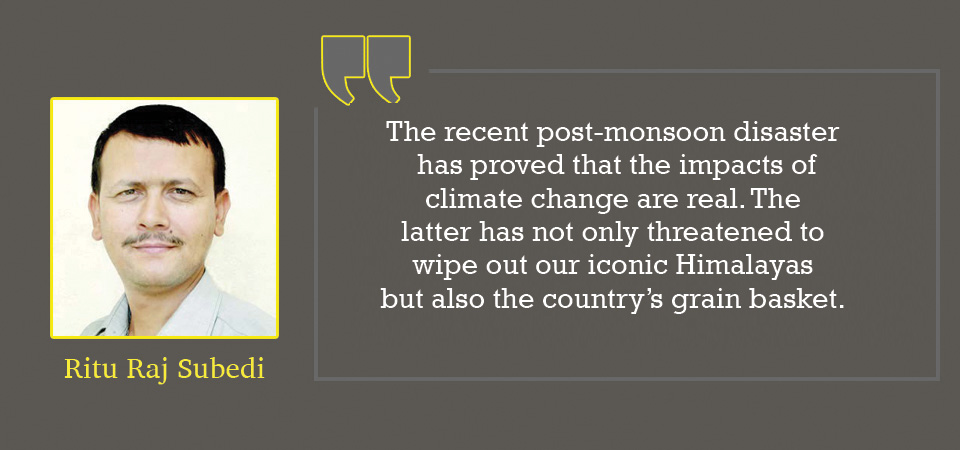
Ritu Raj Subedi
This year monsoon was unusually long. Starting from June, it normally ends by September. But, it stretched up to October. Many people worried that this year’s Dashain would be muddy. Surprisingly, there was no rainfall just before the start of the great festival of Nepalis. The weather was clear as the clouds moved away from the sky. Experts said that the monsoon was now over. However, as it stopped raining, scorching heat began to hit the people. The blistering sun was a prelude to the post-monsoon catastrophe that struck Nepali farmers and other vulnerable people. The loss of lives, crops and other properties was beyond imagination.
After celebrating Dashain, the farmers were preparing themselves to harvest their ripe paddy crop. However, the Meteorological Forecasting Division had released two bulletins on October 14 and 17, warning that there was a possibility of heavy rainfall. They paid little attention to the Division’s cautionary message as the sunny days gave an impression that it was unlikely to rain. Nobody thought that freak torrential rain would lash down, with the departure of monsoon. But it happened like a bolt from the blue. The unseasonal rain submerged their paddy fields and triggered floods and landslides in many parts of the country. As of Saturday, over 111 people died, 33 remain missing, 32 got wounded and 1,188 families have been displaced due to landslides and floods. Paddy crops worth over Rs. 10 billion have been destroyed, according to the preliminary estimate.
Huge losses
This year the country suffered huge loss of lives and infrastructures before and after the monsoon, an uncommon phenomenon attributed to the climate change. Before the start of the monsoon, the floods swept away houses and people in Melamchi of Sindhupalchowk, Gorkha, Manang and Bajura. As the monsoon receded, the sudden downpours destroyed the harvest-ready paddy, dealing a blow to the livelihoods of farmers. This is a disaster that threatens to fuel food crisis and increase farmers’ debts and the country’s food imports if the affected farmers are not offered an effective relief package. Agriculture is the mainstay of national economy, with paddy alone contributing to around 7 per cent to the national gross domestic product. The damage of paddy crop can dampen the prospect of reviving the economy dented by the COVID-19 pandemic.
In Nepal, most farmers rely on paddy farming to keep their hearth going. Rain is both boon and bane for them. In the absence of modern irrigation facility, the fate of the country’s agro-based economy hangs on mercurial rain. Around two-thirds of arable lands depend on it. The country has witnessed more rainfall in a short period of time for the last couple of years. Heavy rainfall, drought and erratic monsoon have occurred in the trans-Himalayan regions owing to the global warming, said scientists. In August, the UN’s Intergovernmental Panel on Climate Change had published a report, stating that the climate change would cause extreme precipitation and river floods in South Asia. There is the need for more studies to correlate the climate change impacts with the pre- and post-monsoon cloudbursts.
The International Centre for Integrated Mountain Development (ICIMOD) has said that temperature is rising at a rate of 0.6 degrees Celsius (1.08 Fahrenheit) per decade in Nepal as a result of climate change. It has led to the fast melting of snow-capped mountains, shrinking of water resources and loss of forests and biodiversity. The recent post-monsoon disaster has proved that the impacts of climate change are real. The latter has not only threatened to wipe out our iconic Himalayas but also the country’s grain basket. This has brought the climate change discourse to houses of Nepali peasants from the halls of national and international conferences.
It is imperative for the experts, policymakers and media to inform the affected communities about climate change and need of adaptive measures to minimise its impacts. Similarly, the political parties and their cadres need to learn how climate change is posing an existential threat to the humanity, which might impel them to be accommodative with the rival parties and forge a common framework to deal with climate crisis.
Nepal endured the adverse consequences of climate change ahead of the 26th UN Climate Change Conference of the Parties (COP26) that will take place in Glasgow of the UK on October 31-12 November. It will discuss the progress reports of attending nations on reduction of greenhouse emissions and increase in energy generation from renewable sources in line with the Paris Agreement. Around 196 nations had agreed to work together to keep the global temperature below 2C and ideally 1.5C of the pre-industrial baseline until the end of this century at the 2015 UN Climate Change Conference in Paris. They require pursuing ambitious 2030 emissions reduction path, known as Nationally Determined Contributions (NDCs) to secure global net-zero emission by 2050 and limit the temperature within 1.5C. For this, the countries should speed up the phase-out of coal and invest in infrastructures based on renewable energy.
Climate finance
Climate change has already triggered devastating effects on livelihoods of communities and natural habitats in those countries which are least responsible for emitting carbon dioxide that accelerated the global warming at an alarming rate in the past decades. At the COP26, the poor, mountainous and developing countries, including Nepal, are set to call for their access to climate finance to make up the loss and damage incurred by the climate change.
With the developed nations being reluctant to fulfil their commitment to contribute $100 billion to the climate fund annually, the climate-vulnerable nations are left in the lurch. The Glasgow summit should draw the attention of the international community to this issue. Various reports suggest that there is no desired progress in slashing the global carbon emissions as per the Paris Climate Accord. U.N. Secretary General António Guterres believes that the upcoming climate conference will be a ‘turning point’ in tackling the climate emergency. He said: “When you are on the verge of the abyss, you need to be very careful about what the next step is. And the next step is COP26 in Glasgow.”
(Deputy Executive Editor of The Rising Nepal, Subedi writes regularly on politics, foreign affairs and other contemporary issues. subedirituraj@yahoo.com)
Recent News

Do not make expressions casting dout on election: EC
14 Apr, 2022
CM Bhatta says may New Year 2079 BS inspire positive thinking
14 Apr, 2022
Three new cases, 44 recoveries in 24 hours
14 Apr, 2022
689 climbers of 84 teams so far acquire permits for climbing various peaks this spring season
14 Apr, 2022
How the rising cost of living crisis is impacting Nepal
14 Apr, 2022
US military confirms an interstellar meteor collided with Earth
14 Apr, 2022
Valneva Covid vaccine approved for use in UK
14 Apr, 2022
Chair Prachanda highlights need of unity among Maoist, Communist forces
14 Apr, 2022
Ranbir Kapoor and Alia Bhatt: Bollywood toasts star couple on wedding
14 Apr, 2022
President Bhandari confers decorations (Photo Feature)
14 Apr, 2022



